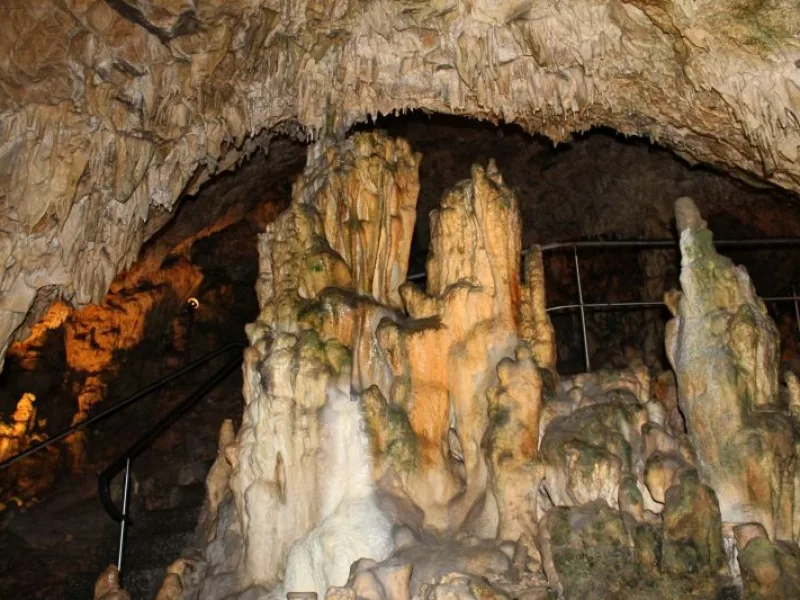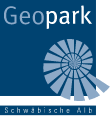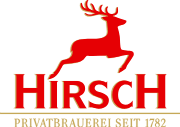Tracking down the secrets of millions of years
Experience the Geopark
In 2015, the Swabian Jura Geopark was recognized by UNESCO and has since been known as the “UNESCO Global GeoPark Swabian Jura”. The Donaubergland is part of it.
The karst mountains are one of the most fascinating low mountain ranges in Germany. The power of water has carved a large number of caves into the karst rock, making the Swabian Alb the region with the most caves in Germany.
The Donaubergland region is home to some of the most impressive highlights of the Swabian Alb Geopark.
The Kolbing Cave” show cave, the natural phenomenon Danube seepagethe Höwenegg and the Danube Gorge Valley are worth a visit, along with many other geological and scenic gems.
Kolbing Cave
On the edge of the Danube valley in the Kolbing district lies an impressive stalactite cave, which has been opened up as a show cave. The cave, which is around 90 meters long, is richly decorated with stalactites, but before you can admire the magnificent stalactites, you have to climb 141 steps.
The local branch of the Swabian Alb Association offers public guided tours at weekends from Good Friday to the end of October and during the summer vacations in the first three weeks of August. Special tours can also be booked for groups outside opening hours.
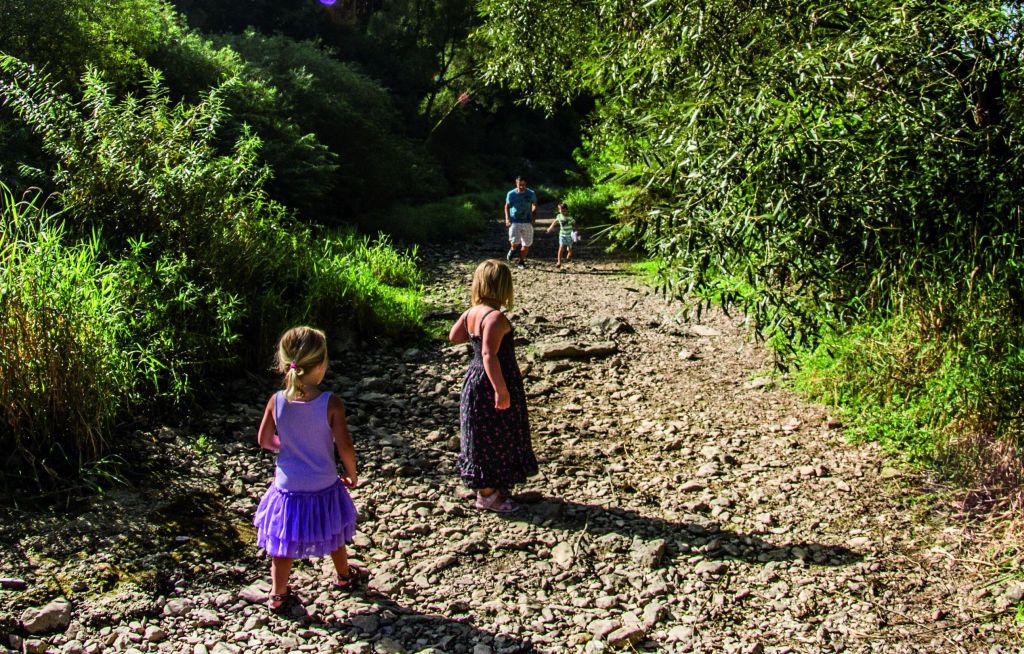
Danube infiltration
The Danube seepage is a natural spectacle of European importance, unique because from here a river flows into two oceans – the Black Sea (as we have learned) and the North Sea!
At the sinking points between Immendingen and Fridingen, a large part of the Danube water makes its way underground through the rock towards the south to emerge again in the Aach spring and flow into Lake Constance and the Rhine. So you could say in a nutshell: in summer, Vienna is not on the Danube, but on the Krähenbach.
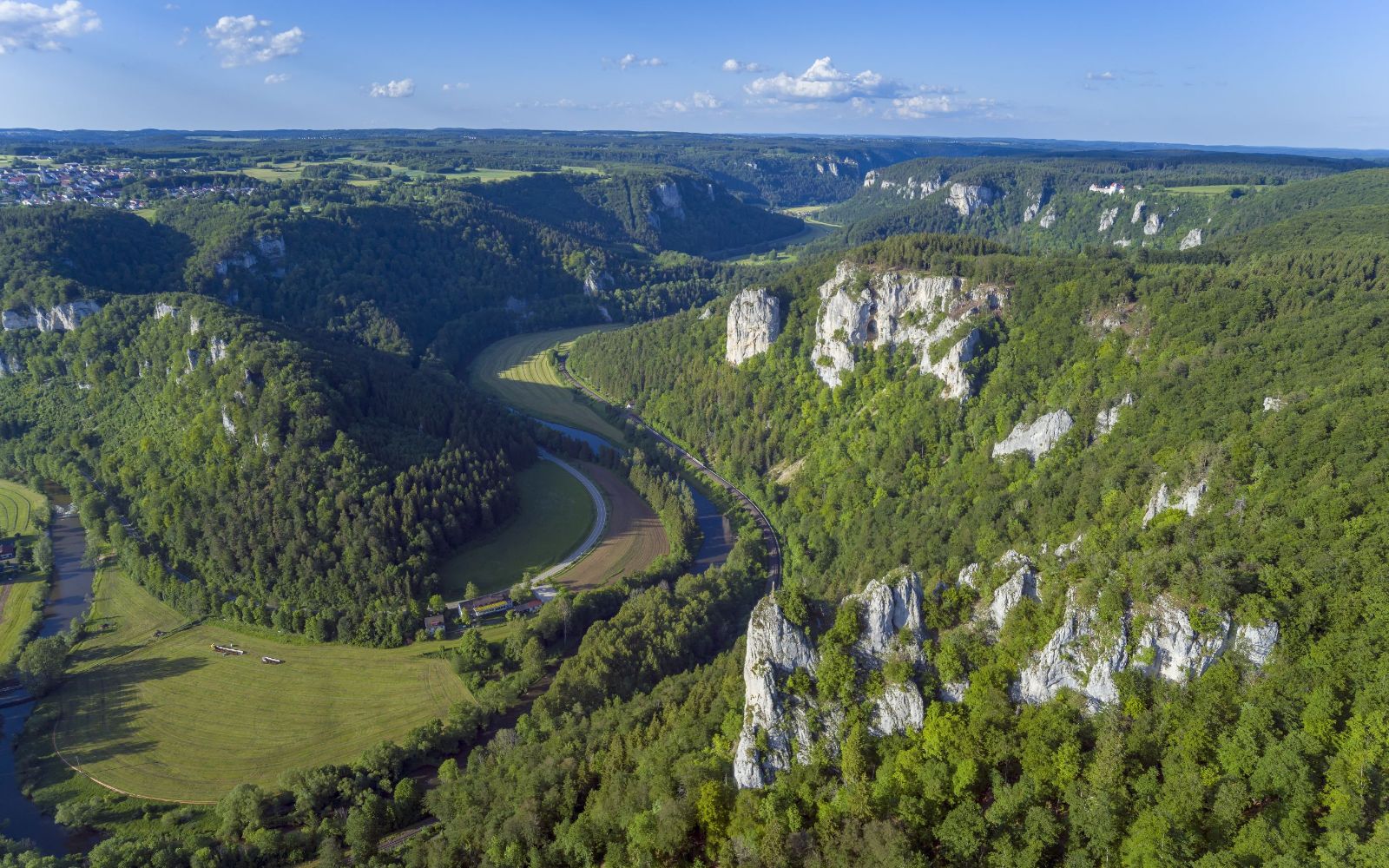
Upper Danube Valley
A few kilometers after the Danube seepage, the landscape of the Danube and the Donaubergland changes completely. High, steeply sloping white cliffs now dominate the landscape to the left and right of the valley. And the Danube? It meanders – mostly – leisurely as a narrow river through the approximately 50-kilometre-long breakthrough valley between Mühlheim and Inzigkofen.
The Upper Danube Valley is popularly known as the “Swabian Grand Canyon”. It is the core zone of the Upper Danube Nature Park. This impresses with a wealth of rare plants and animals.
The ARD program “Planet Wissen” explains many geological phenomena and geological developments very clearly. The “Planet Wissen” website also provides information and links on the formation of the Swabian Alb.
Newsletter
Do you want to keep up to date with the latest news from the Donaubergland? Then sign up now for our newsletter.
AlbCard
By the way, absolutely attractive: the AlbCard – the guest card for the whole of the Swabian Alb – is also available from selected businesses in the Donaubergland.

